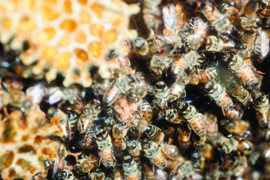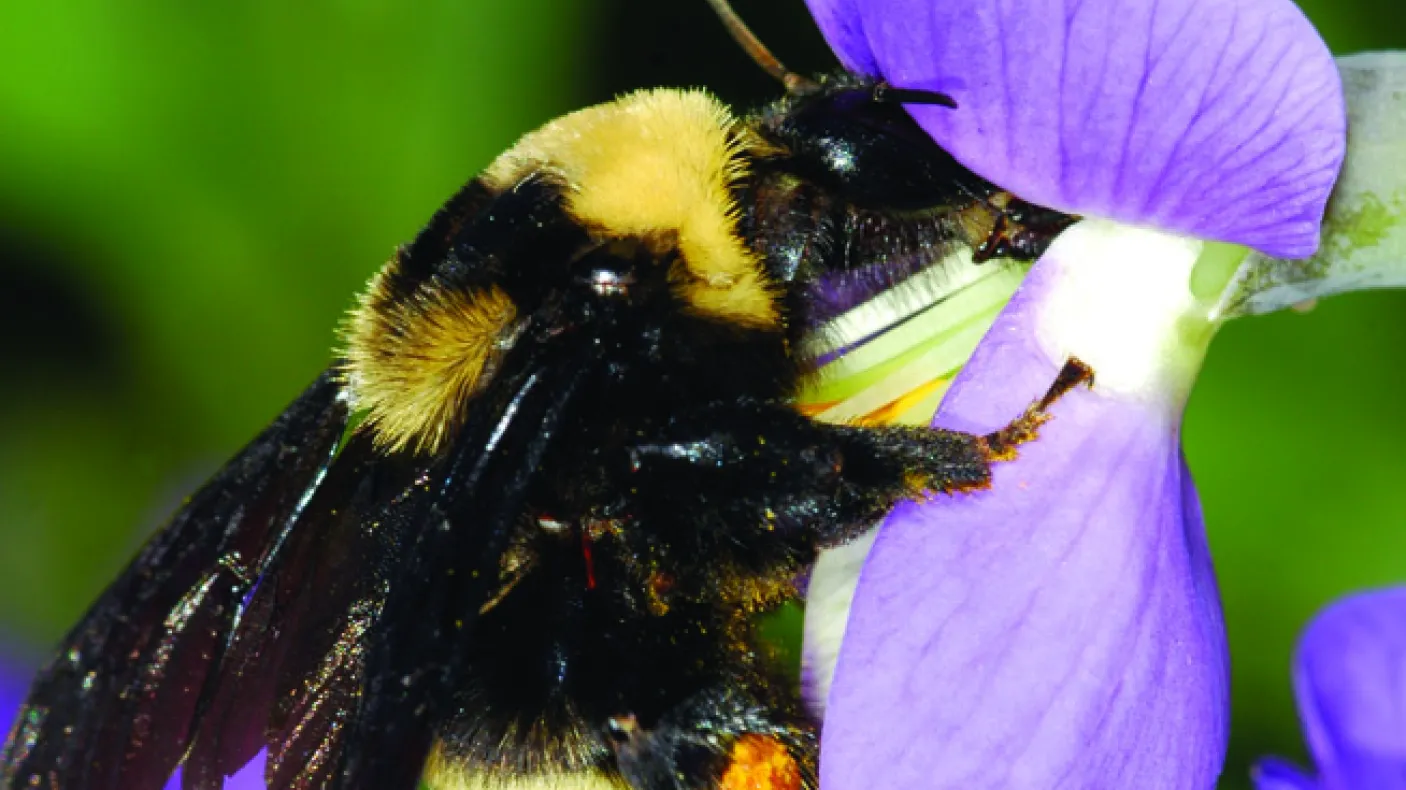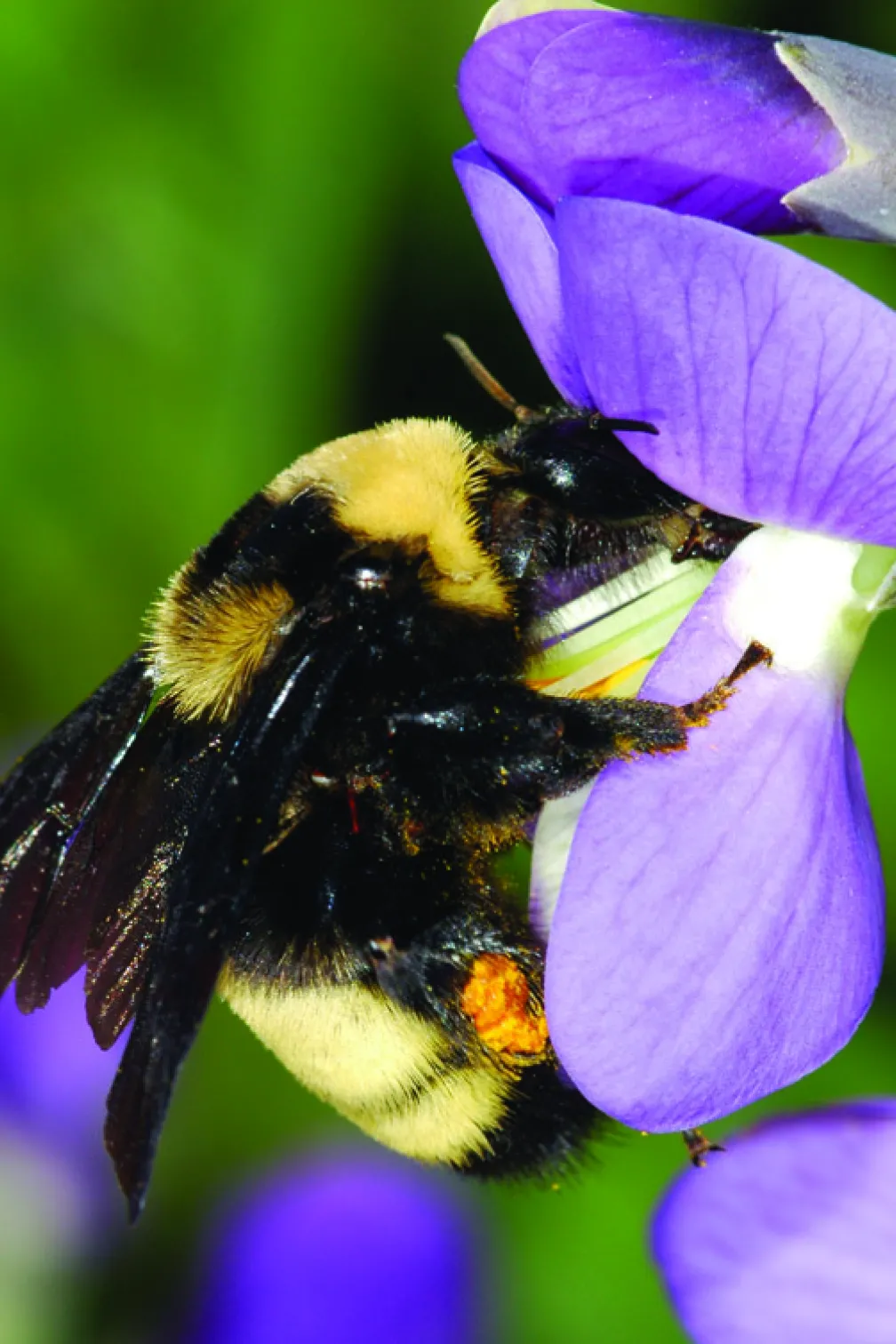What's the Buzz on Bees?
Published
Categories
Blog Post
Antonia Guidotti, is an Entomology Technician at the ROM.
WHAT IS A BEE?
Bees, ants, and wasps belong to the scientific order Hymenoptera, whose members have four transparent wings in at least one form. Some wasps and flies look very bee-like and bees can vary in size, colour, and fuzziness. They aren’t all black and yellow! The insects that bother you at a picnic in the summer are not bees but social wasps. Bees are more docile. Many people think of honey bees when they hear the word “bee.” The non-native European Honey Bee (Apis mellifera) is a managed species of bee—the only one in Canada that produces honey. But “bee” includes the over 20,000 species of wild bees found in the world (there are over 350 species in the Toronto area).
There are lots of news reports about “bees” in decline or disappearing; should we be concerned?
The answer to this question is somewhat complicated. There are threats to both honey bees and wild bees. Let’s address them separately:
WILD BEES
Wild bees are important pollinators of many native species of plants and some crops. Scientists suspect that SOME native bees are declining due to:
- competition for nectar sources from introduced bees such as honey bees and Wool Carder Bees (Anthidium manicatum)
- habitat loss (loss of feeding, nesting, and overwintering habitats)
- disease spillover from managed bees
- pesticides
- changing climate
Some natural factors (such as predators, parasitoids, food thieves, and the environment) affect their populations as well.

HONEY BEES
Non-native honey bees are used commercially to pollinate crops and for honey production. Beekeepers are financially impacted when a hive dies off and there is also a negative impact on honey bee pollinated crops. There are some similar factors affecting honey bees:
- disease outbreaks (Varroa mites, fungi, viruses)
- predators (small hive beetles)
- pesticides
- low quality diet—lack of diversity or availability of pollen sources
- poor hive management
- changing climate
It is thought that some combination of these factors may be causing some colonies to die off. There are also natural environmental factors affecting honey bees. So yes, we should be concerned about the potential loss of bee species and the reduction in pollination services by all species of bees.
What bees are threatened or at risk in Ontario?
So far, three are listed as endangered: the Rusty-patched Bumble Bee (Bombus affinis), the Gypsy Cuckoo Bumble Bee (Bombus bohemicus) and Suckley’s Cuckoo Bumble Bee (Bombus suckleyi). Some other bumble bee species are in decline as well—the American Bumble Bee (Bombus pensylvanicus) and Yellow-banded Bumble Bee (Bombus terricola) are species of Special Concern. The European Honey Bee (Apis mellifera) is not considered at risk.
Do all bees make hives?
No. Honey bees make hives above ground, bumble bees use abandoned mice nests below ground. Many other wild bees will also nest in the ground (including sweat bees) and some nest in wood cavities.
How can we support native bee species in the GTA?
These suggestions are adapted from The Bees of Toronto.
- Plant a variety of native plants in your garden.
- Use little mulch so as not to cover up bare ground that ground nesting bees could use.
- Keep piles of twigs and small branches for bees to use.
- Submit bumble bee observations at bumblebeewatch.org.
- Don’t use pesticides.
Originally published in the Summer 2016 issue of the ROM Magazine.



